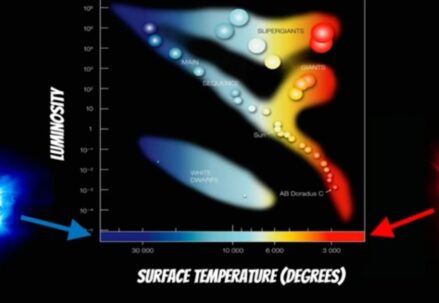The realm of quantum theory has unveiled an intriguing and paradigm-shifting concept that has completely transformed our comprehension of the intrinsic essence of light. Devised more than a century ago, this revolutionary theory has not merely reconstructed our perception of the electromagnetic spectrum, but it has also forged the path for groundbreaking technological progress that has profoundly altered the very fabric of our world.
In the following discourse, we shall embark on an expedition into the depths of the quantum theory of light, delving into its core principles and unraveling the far-reaching ramifications it holds for both the realms of science and technology.
Unveiling the Enigmatic Principle of Wave-Particle Duality in Quantum Optics
Delving into the fascinating realm of quantum optics, we embark on a journey to unveil the captivating enigma known as wave-particle duality. Within this intricate field lies the profound notion that light, the fundamental essence of our visual world, possesses a dual nature. It defies our conventional understanding by behaving as both waves and particles, and this duality serves as the cornerstone of quantum physics, influencing an array of natural phenomena.
Wave-particle duality in the quantum theory of light encompasses a wealth of intriguing facets:
1. Photons: The Quantum Messengers of Light
At the heart of this principle resides the concept of photons, discrete bundles of energy that embody the particle-like aspect of light. These minuscule packets of light carry quantized amounts of energy, emphasizing the particle nature of light.
Tip: Visualize photons as tiny, indivisible parcels of light energy, each with its unique identity.
2. Wave-like Properties and Quantum Light
Intriguingly, light also exhibits wave-like attributes, including interference and diffraction. It gracefully dances through space, creating beautiful patterns of light and shadow. This wave-like behavior adds depth to our understanding of light’s nature.
Insight: Think of light waves as graceful dancers, performing intricate choreography in the theater of space.
3. Complementary Notions, Not Separate Realities
Crucially, wave and particle characteristics of light are not separate entities, but rather two sides of the same coin. The duality emerges depending on the conditions of observation. In essence, it is the universe’s way of keeping us on our toes, challenging our perceptions of reality.
Recommendation: Experiment with different observation setups to witness the interplay between light’s dual nature firsthand.
4. A Cosmic Connection: Beyond Light
The intrigue doesn’t end with light. Wave-particle duality extends its enigmatic embrace to other entities, such as electrons. This revelation hints at a profound connection between the intricate world of quantum mechanics and the vast expanse of the universe.
Insight: Contemplate the idea that the quantum world may hold the keys to understanding the cosmos on a grand scale.
Dissecting Quantum Light Theory: The Concept of Energy Quantization
Unraveling Energy Quantization:
Delving into quantum optical science, the idea of energy quantization stands as a cornerstone. It’s a phenomenon through which energy, particularly light energy, manifests in distinct, non-continuous packets known as ‘photons’. Each photon embodies a fixed energy quantity, which correlates directly with their frequency. The principle of energy quantization is an outgrowth sprouting from the quantum theory of light.
This quantization principle becomes instrumental in demystifying several scientific phenomena including:
- The Photoelectric Effect: This is the intriguing process whereby electrons are ejected from a material’s surface (commonly a metal) when light of sufficient frequency illuminates it. It was this very effect that gave birth to the concept of light being made up of photons, each carrying quantized energy;
- Light Emission & Absorption by Atoms: The principle also sheds light on how atoms and molecules engage with light energy. When an atom absorbs a photon, it gains energy, causing its electrons to leap to a higher energy state. Conversely, when an atom sheds energy, it emits light as its electrons drop back to their original state;
- Quantum Leaps: The explanation of how electrons perform quantum leaps between energy levels within an atom without traversing the space in between also banks heavily on the principle of energy quantization.
Understanding energy quantization, therefore, is central to comprehending not only the behavior of light but also various quantum mechanical phenomena and atomic structures. It unveils the enigmatic dance between light, energy, and matter, steering us towards the path of unlocking more cosmic mysteries.
By delving deeper into this fascinating world, we undeniably increase our understanding of the universe’s fundamental dynamics.
Why is Quantum Entanglement So Mind-Boggling?
Quantum entanglement challenges our fundamental understanding of the universe, presenting us with a paradoxical reality where particles, regardless of their separation, remain intimately connected. To appreciate the profound implications of this phenomenon, let’s take a closer look:
Key Characteristics of Quantum Entanglement:
- Instantaneous Interaction: When two entangled particles are observed, their properties instantly correlate, seemingly transmitting information faster than the speed of light;
- Distance No Barrier: The entangled particles can be light-years apart, and yet, their connection remains intact, bewildering our classical notions of spatial limitations;
- No Causality: Entangled particles don’t communicate through any conventional means; there’s no signal or information exchange. It’s as if they share an invisible, cosmic bond.
Applications of Quantum Entanglement:
Now that we’ve unlocked the mystery of quantum entanglement, let’s explore the exciting applications that emerge from this phenomenon:
1. Quantum Cryptography: Fortifying Communication Security
Quantum entanglement serves as the bedrock of quantum cryptography, ushering in a new era of ultra-secure communication. Here’s how it works:
- Quantum Key Distribution (QKD): QKD leverages entangled particles to create encryption keys, making it practically invulnerable to eavesdropping. Even the most advanced eavesdropping techniques cannot intercept the key without altering its quantum properties, instantly alerting the users to the breach;
- Unbreakable Encryption: Quantum cryptography ensures the highest level of security, as any attempt to tamper with the entangled particles during transmission disrupts the key, rendering intercepted data incomprehensible.
2. Quantum Teleportation: A Glimpse into the Future of Information Transfer
While it might not involve the teleportation of physical objects, quantum teleportation offers a tantalizing glimpse into the possibilities of instant information transfer:
- Information Transfer via Entanglement: Scientists are actively exploring the potential of quantum entanglement for instantaneous information transfer. By entangling two photons and manipulating their quantum states, they aim to transmit information from one photon to another, even if they are light-years apart;
- Revolutionizing Communication: The successful development of quantum teleportation could revolutionize long-distance communication, enabling instant and secure data transmission across vast distances, heralding a new era in global connectivity.
The Quantum Frontier: Where Science Meets the Future
Understanding the intricacies of superposition and entanglement in quantum optics is not just a journey into the quantum realm but also a gateway to the future of groundbreaking technologies. These technologies hold the promise of revolutionizing various aspects of our lives:
- Quantum Computing: Quantum entanglement plays a pivotal role in the development of quantum computers, potentially solving complex problems at unprecedented speeds;
- Quantum Sensors: Precise measurements and sensing technologies benefit from quantum entanglement, allowing us to explore new frontiers in navigation, imaging, and more;
- Quantum Networking: Quantum entanglement is poised to create unbreakable networks, revolutionizing industries like finance, healthcare, and national security.
Quantum Light Theory and its Revolutionary Applications
Quantum Computing: A New Horizon for Processing Power:
Quantum computing, one of the most promising areas of modern technology, deftly exploits the quantum theory of light. These high-powered machines leverage the quantum states of subatomic particles to execute advanced computations at a rate far surpassing that of standard computers. Quantum computers, by utilizing quantum bits (qubits) in lieu of binary bits, are capable of occupying multiple states concurrently, thus performing multiple calculations simultaneously.

The quantum leap in computational efficiency afforded by quantum computing heralds transformative advancements in many areas, such as:
- Cryptography: Quantum computers could potentially crack even the most intricate encryption methods, rendering current forms of online security obsolete. Simultaneously, they also offer the foundation for quantum encryption, leading to unprecedented levels of secure data transmission;
- Drug Discovery: Computational chemistry and medicine can hugely benefit from quantum computing. By simulating molecular interactions more precisely, drug development could be greatly expedited, culminating in faster and more effective treatments;
- Optimization Problems: The immense computational power of quantum computing can solve optimization problems with hitherto unachievable speed and efficiency, advancing fields like logistics, machine learning, and energy distribution;
- Financial Modeling: Quantum computers promise to enhance portfolio optimization, risk analysis, and pricing models, thereby revolutionizing the finance sector.
By harnessing the principles of the quantum theory of light, quantum computing offers a tantalizing glimpse into the future of technology and its potential to reshape various sectors of human endeavors.
Quantum Optics And The Future Of Secure Communication
Quantum Cryptography: The Vanguard of Secure Communication:
As the information age advances, the demand for secure communication channels is stronger than ever. Quantum cryptography, an application based on the principles of quantum optics, is poised to be the solution. This technology leverages the unique and enigmatic properties of entangled photons to lay the foundation for virtually unassailable communication systems.
Quantum cryptography makes use of a protocol known as Quantum Key Distribution (QKD). This technique exploits the nature of quantum mechanics to share cryptographic keys between individuals securely. If a third party tries to eavesdrop or intercept the key, the quantum state of the system alters, alerting the legitimate parties to a security breach immediately.
This revolutionary technology would be a game-changer in various fields:
- Cybersecurity: Quantum cryptography could make data breaches a thing of the past, protecting sensitive user information from cyber threats;
- Government Communications: For government and military communications, quantum cryptography can provide unparalleled security, ensuring sensitive strategic data remains classified;
- Banking And Finance: Financial institutions can protect their transactions, creating an impregnable barrier against fraud and cyber theft.
Quantum cryptography, by harnessing the principles of quantum optics, is leading us to an era of faultless security, promising reliable protection against the looming threats of cybercrime. As the technology matures and becomes more accessible, it is set to redefine the landscape of secure digital communication.
Pioneering Innovations in Quantum Sensor Technology
Quantum Sensors: Setting New Standards of Precision
Harnessing the unique properties of quantum optics has ushered in a new generation of sensors that are redefining the boundaries of precision and sensitivity – Quantum Sensors. By employing individual photons or entangled photon pairs, quantum sensors can detect minute changes in an environment or subject that were previously undetectable by traditional sensing technology.
The groundbreaking precision of quantum sensors has opened up a world of applications:
- Medical Imaging: Quantum sensors could revolutionize medical diagnostics by providing incredibly detailed body scans. They hold the potential to spot minute anomalies and diseases at their earliest stages, leading to more effective treatments and improved patient outcomes;
- Environmental Monitoring: Quantum sensors offer unprecedented sensitivity in tracking environmental changes. They can precisely measure parameters like temperature, pressure, and magnetic fields, thereby aiding climate change research and environmental conservation efforts;
- Navigational Systems: Quantum accelerometers and gyroscopes could enhance navigational systems, providing precise location data without relying on GPS signals. This could prove invaluable in undersea or space exploration, where GPS signals are not accessible.
Quantum Imaging: Visions of the Invisible
In the realm of imaging, quantum optics is facilitating the development of ‘quantum imaging’ techniques. These methods employ quantum properties of light, such as entanglement, to capture images with remarkable clarity and detail. Quantum imaging has the potential to see through obstacles, creating images of objects hidden from conventional cameras.
Future advancements could see quantum imaging changing the face of several industries:
- Security: Quantum imaging could improve surveillance technology, being capable of detecting hidden or obscured objects;
- Medicine: In medical diagnostics, quantum imaging could provide a non-invasive means of examining tissue at a molecular level, leading to early disease detection and targeted treatments;
- Scientific Research: Quantum imaging could also assist in scientific research by enabling ultra-detailed observations of microscopic phenomena, like the behaviour of atomic and subatomic particles.
Quantum sensors and quantum imaging, powered by quantum optics, are paving the way for advancements that promise to transform industries and improve our understanding of the world around us. As research progresses, we can anticipate even more fascinating applications of these quantum technologies. Also, dive into the mesmerizing world of quantum levitation as we unveil the magic of defying gravity with cutting-edge science.
Conclusion
The advent of the quantum theory of light marks the commencement of a fresh epoch in scientific exploration and technological progress. By embracing the concept of light’s dual nature as both waves and particles, along with the quantization of energy, we have acquired profound insights into the fundamental mechanics of the cosmos. As we persist in delving into the repercussions of quantum optics, we can foresee a multitude of innovative breakthroughs on the horizon, poised to sculpt the forthcoming landscape of science and technology. Remain engaged for the forthcoming exhilarating discoveries in the realm of quantum physics and its myriad applications.





